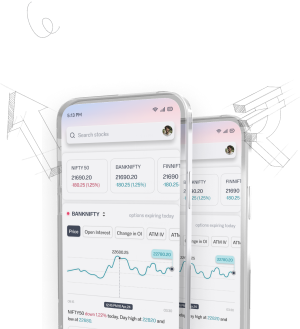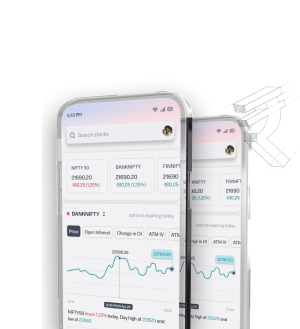Fibonacci Retracements: How W.D. Gann Used Golden Ratios in Trading
There are many tools and techniques in the trading world. Among the most important techniques to look for levels at which price might turn are the so-called Fibonacci Retracements. These derive from the old Fibonacci sequence. W.D. Gann, a famous trader, spiraled these Golden Ratios into his methods. This article will trace where the Fibonacci numbers come from and what Gann found.
Significant Points
- Fibonacci retracement levels are important in finding places where the prices might change direction.
- The Golden Ratio of 1.618 turns up in many places, from trading strategies to beauty.
- Gann's trading method uses Fibonacci ratios in a unique manner.
- Traders often combine more than one tool with Fibonacci levels to obtain better results.
- Fibonacci levels such as 61.8%, 38.2%, and 23.6% are very important for predicting prices.
- Timeframes do matter in the trading business to humanly make Fibonacci retracements work better.
Introduction to Fibonacci and Its Historical Importance
One of the greatest mathematicians is said to have discovered the Fibonacci sequence, Leonardo Pisano. That makes this beautiful and useful sequence, used by financiers across the globe, begin with 0 and 1, where each number is simply the sum of the previous two.
These ideas were then studied by Indian mathematicians from 100 B.C. to 350 A.D. In trading, the ratios of the sequence are critical, such as 23.6%, 38.2%, 50%, 61.8%, and 78.6%. They identify where prices could change.
Fibonacci's book, "Liber Abaci," was published in 1202 and introduced his numbers as relevant to everyday life, such as in trading. These numbers will thus help decide when to buy or sell, find stop-loss points, or set price goals. This improves trading.
- The trading origin is contributed by dynamic application of Fibonacci levels.
- Common ratios can easily pick out important inflection points in share prices.
- Viewing Fibonacci ratios will enable traders to utilize other signals to validate their analyses.
Fibonacci's ideas enable us to visualize price action, therefore somewhat relating mathematics with finance. Using Fibonacci in trading shows how art, science, and history are related.
| Fibonacci Level | Percentage | Usual Uses |
|---|---|---|
| First Level | 23.6% | Potential Support/Resistance |
| Second Level | 38.2% | Trend Reversal Indicator |
| Middle Level | 50% | Entry/Exit Points |
| Fourth Level | 61.8% | Golden Ratio Reference |
| Last Level | 78.6% | End of Retracement |
The Mathematics of the Fibonacci Sequence.
The Fibonacci Sequence starts with 0, 1, 1, 2, 3, 5, and goes on forever. Every number beyond the first two is the sum of the previous two. This sequence crops up a lot in Math, especially in connection with the Golden Ratio, which is about 1.618.
Ratios of any Fibonacci numbers tend towards the Golden Ratio. For example, 34 and 55 divided by one another equal approximately 1.618. These values have real-world applications in finance, nature, and building design.
In trading, Fibonacci retracements come from the Fibonacci Sequence. They help identify where prices could make a U-turn. A trader will look for levels like 23.6%, 38.2%, 50%, 61.8%, and 100%. These levels can indicate either a stop in prices or a turn.
Knowing the Fibonacci Sequence helps in writing better trading plans. It helps to determine the trends prevailing in the markets. Fibonacci numbers find a significant place, whether in plants, through charts, or not.
Understanding Fibonacci Ratios and Their Trading Applications
Fibonacci Ratios are used in trading. They are 23.6%, 38.2%, and 61.8%. These levels have been retrieved from the Fibonacci sequence. They are indicative of reversals in price movement.
To find Fibonacci Retracement Levels, take the high price and subtract the low price of an asset. This shows us where prices might change direction. After finding the highest and lowest prices, we draw these levels on charts.
Traders use the Fibonacci levels to say where prices may go back up. For example, after the S&P 500 fell from 3,400 to 2,200, a recovery might be seen at the 38.2% level.
These levels seem to attract prices, making them come true. When prices reach these levels, they suggest what could happen next. We can explore more with tools like moving averages.
| Fibonacci Level | Common Interpretation | Usage in Trading |
|---|---|---|
| 23.6% | Minor Support/Resistance | Watch for slight reversals |
| 38.2% | Moderate Retracement | Potential entry points |
| 50% | Common Midpoint | Indicates a halfway retracement |
| 61.8% | Strong Retracement | Often marks strong reversal points |
| 100% | Full Retracement | Indicates full return back |
Understanding Fibonacci Retracement levels helps us know the market trend. It helps to set stop-loss levels and profit targets. These levels can be utilized on different time scales, making them a useful tool for trading.
The Role of the Golden Ratio in Technical Analysis
The Golden Ratio, being around 1.618, is important in technical analysis. It helps one identify critical price levels. We use it in finding support and resistance areas in Fibonacci retracement.
Fibonacci levels such as 38.2%, 50%, and 61.8% come from the Golden Ratio. These levels often indicate where the market might change direction. By using Fibonacci lines, we can identify where prices might adjust after large movements.
"The Golden Ratio is more than a number; it is a tool that links math ideas with real-life trading situations."
Understanding how the Golden Ratio and Fibonacci levels work helps us make better predictions. Fibonacci fans indicate support and resistance. They help us identify important price movements.
Examples of Fibonacci time zones include lines spaced by the sequence, helping to predict big price moves. Combining these with other tools powerfully increases our accuracy in spotting market turns.
- The Golden Ratio assists a trader in market complexities.
- Fibonacci levels often match trader sentiment and market behavior.
- This helps us predict market corrections wisely through these levels.
Fibonacci Retracements: The Tool for Identifying Price Levels
Fibonacci retracements help us find important price levels in markets. We mark important Fibonacci ratios using high and low points on charts. This method shows where support and resistance could be, helping us predict market movements.
How Fibonacci Levels Project Support and Resistance
Fibonacci retracement levels are drawn as lines on the chart. They indicate expected points for prices to pause or reverse onwards. Usually used levels are 23.6%, 38.2%, 50.0%, 61.8%, and 76.4%. The 50.0% level is not included in the Fibonacci series; however, it is still valid.
Often, traders place orders within these levels, which prompt price changes. Yet again, these levels don't necessarily mean prices will move as expected; they are thus zones where price action might change.
Using Fibonacci Retracement Levels to Analyze Trends
The Fibonacci retracements show the trends, demonstrating levels of 23.6%, 38.2%, and 61.8% to thereby enable us to trace the price changes. This then enables the trader to make better choices regarding the pair AUD/USD.
Fibonnaci retracements are important to technical analysis, even with some limits. They help identify the best time to buy or sell by using past price data.
| Currency Pair | Retracement Levels |
|---|---|
| AUD/USD | 23.6%, 38.2%, 50.0%, 61.8%, 76.4% |
| EUR/USD | 23.6%, 38.2%, 50.0%, 61.8%, 76.4% |
W.D. Gann and His Trading Techniques: A Beginner's Guide
W.D. Gann changed trading with his unique methods. He showed that angles and time cycles are important in analyzing markets. His work helps traders understand market trends more clearly. By combining Gann's ideas with Fibonacci retracements, we can enhance our trading.
Gann used both angles and time cycles.
He used angles for trading, which are called Gann Angles. It shows where prices may stop or change directions. For example, a 45° angle means price and time are in balance.
Other aspects; 26.25 degrees, 14.04 degrees, have their own trigonometrical proofs scalpers and other traders use theos to forecast moverment of the market.
How Gann's Methods Tie to Fibonacci Retracements
Fibonacci retracements do match well with the Gann methods. Gann did not use Fibonacci; rather, both made an attempt to find important price levels. The use of Fibonacci with Gann angles gives us stronger trading signals.
When Gann angles meet Fibonacci levels, they give us clear ideas. This combination helps us make better trading decisions.
Just understand Gann angles and Fibonacci retracements clearly; Gann used different price levels, including the 50% level, like Fibonacci does. Doing a combination of these methods can make our trading strategies better.
Using Fibonacci Ratios in Trading Plans
Using the Fibonacci ratios within our trading plans helps us make better choices for entry. The ratios offer a very explicit way to look at when to buy and sell. Knowing these levels helps us manage market changes effectively.
Successfully closed deals based on Fibonacci ratios.
Suppose we are watching a stock costing $100. Say, the stock price decreases, hence we will use the Fibonacci levels for estimating it may go down to next:
- At the 38.2% retracement level the price might rally to approximately $119.10 (this is just estimated by taking $100 + ($50 × 0.382).
- For a 50% retracement level, we would have a price of $125 ($100 + ($50 x 0.5)).
- The 61.8% retracement level shows a possible price of $130.90 ($100 + ($50 x 0.618)).
These Fibonacci levels allow us to see the best buy and sell points. This could help us make our trades more successful.
Most Common Mistakes in Trading with Fibonacci Tools
We need to be careful with mistakes when using Fibonacci ratios. Choosing the wrong retracement levels can lead to losses. Not looking at the overall situation may mean missing good opportunities or bad timing for buying or selling.
We should use Fibonacci ratios along with other tools like moving averages and the Relative Strength Index (RSI). This helps us manage risks more effectively. It allows us to set a stop loss order at important points to protect our money.
| Fibonacci Retracement Levels | Potential Price (based on a $50 pullback) | Common App |
|---|---|---|
| 38.2% | $119.10 | Entry point identification |
| 50% | $125.00 | Confirmation level for trend continuation |
| 61.8% | $130.90 | Potential reversal point |
| 78.6% | $135.00 | Stop-loss placement |
Fibonacci Retracements in Forex and Stock Trading
Fibonacci Retracements are one of the key techniques in Forex and stock trading. Correspondents use it to determine where the market is most likely to change direction. These retracements permit traders to manage risk and shoot for big profits. They are mainly focusing on some stages of stock, like 38.2%, 50%, 61.8%, to see where the market may stop or change direction. Importance of Time Frames in Fibonacci Trading Time frames are very important in Fibonacci trading as they give various details. Short-term charts, say 30 to 60 minutes, have fast market changes. Longer charts, say daily or weekly, show the overall views along with the market's emotions.
Here are some important things to remember:
- The usual Fibonacci levels used in Forex trading are 22.6%, 38.2%, 50%, 61.8%, and 78.6%.
- Many traders set stop-loss levels below key Fibonacci retracement levels, like 50% and 61.8%, to protect their money.
- Merging different time frames can help us trade with more accuracy. This applies to the Fibonacci Flush Strategy and Parabola Pop Strategy.
These methods would help us make a better trade with Fibonacci. That way, we can trade more factually without being emotional. It improves trading in Forex and stocks.
| Fibonacci Level | Typical Application | Recommended Time Frame |
|---|---|---|
| 22.6% | Watching small pullback points | Short-term (30-60 min) |
| 38.2% | Identifying initial support/resistance | Short to medium-term (1-4 hours) |
| 50% | Recognizing the tendency of major retracement | Medium-term |
| 61.8% | Finding strong rebound opportunities | Medium to long-term (daily or weekly) |
| 78.6% | Indicating a deeper correction level | Long-term (weekly to monthly) |
Using Fibonacci Retracements with Other Technical Indicators
The application of Fibonacci retracements with technical indicators helps us make better choices. This combination gives us a proper way to find good times to add to a position or trim a position. It gets better with the use of different tools in hand at a time.
Employing moving averages with Fibonacci retracements is intelligent in use. We look for opportunities to buy when markets rally, because at key Fibonacci levels, this represents an area of confluence for the 50 or 200-day moving average. This even solidifies our understanding, and one can correlate our previous price-action trading signals with what took place in the past.
Another one to think about is the Relative Strength Index (RSI). We can use the RSI with the Fibonacci levels to find changes in trends. If the RSI shows prices are too low in a bear trend, the Fibonacci levels can tell us it's a good time to buy.
The Bollinger Bands work best in combination with Fibonacci retracement: the observation of the price moving closer to the bands also lets us see the key support and resistance. When prices reach these bands and Fibonacci levels match, this illustrates a big change in the market.
One of the most important indicators is the Moving Average Convergence Divergence (MACD). We will find great buying opportunities by observing the Fibonacci levels during a bullish divergence on the MACD downwards. This backs our trading strategies.
| Indicator | Usage with Fibonacci | Key Insights |
|---|---|---|
| Moving Averages | Identify uptrends at 50 or 200-day levels | Support buying signals as the trend is |
| Relative Strength Index (RSI) | Fibonacci aligns all with oversold conditions | Shows potential trend reversals |
| Bollinger Bands | Monitor price within upper and lower bands | High/low area when combined with Fib levels |
| MACD | Recognize fall out of Fibonacci levels | Find potential buying opportunities at downtrends |
Together, these two tools can really help make trading plans better. Each of the indicators individually signals something unique. The use of them on the side of Fibonacci retracement helps us have a clear view of the entire market. Consequently, trading with more precision and confidence becomes easier.
Conclusion
We have brought in studies of Fibonacci Retracements and the tool of W.D. Gann. They offer a nice way to help better our trading plans. The primary key ratios of Fibonacci help to identify key price levels. These levels play a vital role in supporting and resisting different market conditions. Using Gann's techniques with Fibonacci retracements, more details have been given in our analysis. The combination allows predicting market movements more precisely and managing risks more effectively. It makes trading simply much easier whether one is day-trading or swing-trading. Learning about Fibonacci retracement levels and Gann's ideas can help us become better traders. By using these strategies carefully, we can make better decisions in our trading journey.
Disclaimer
The content provided is for educational purposes only and does not constitute financial advice. For full details, refer to the disclaimer document.




